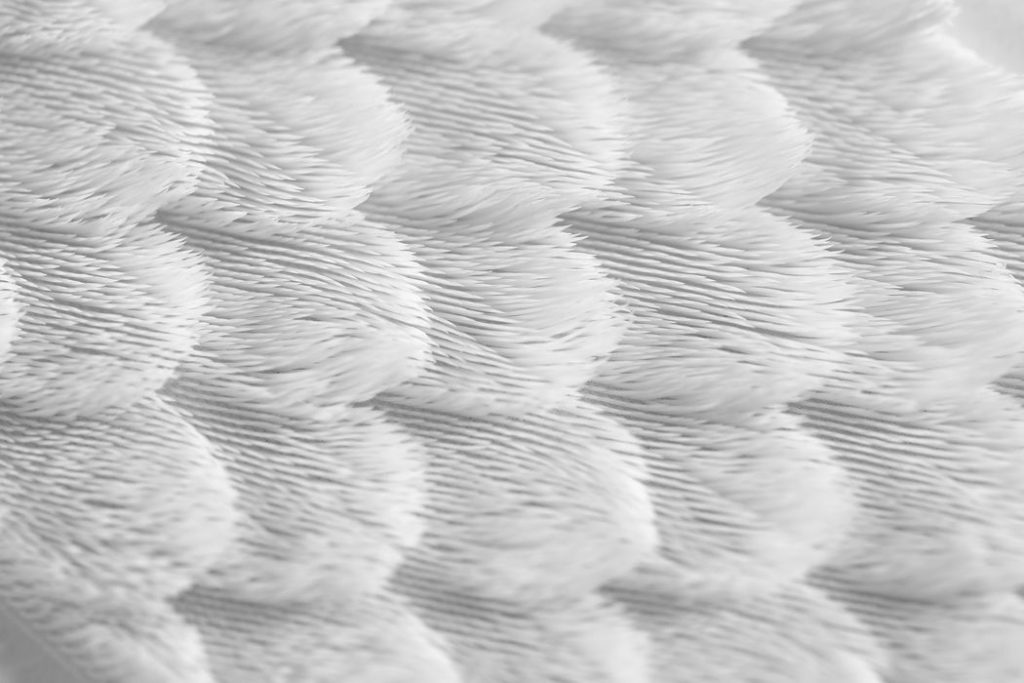
OPT Industries is a 3D print startup company that is developing quite a number of innovations.
The company was founded only two years ago when founder Jifei Ou graduated from MIT, where he had spent seven years working at the famous MIT Media Lab. There he and others developed sophisticated techniques for designing and printing complex meta-materials using computational design.
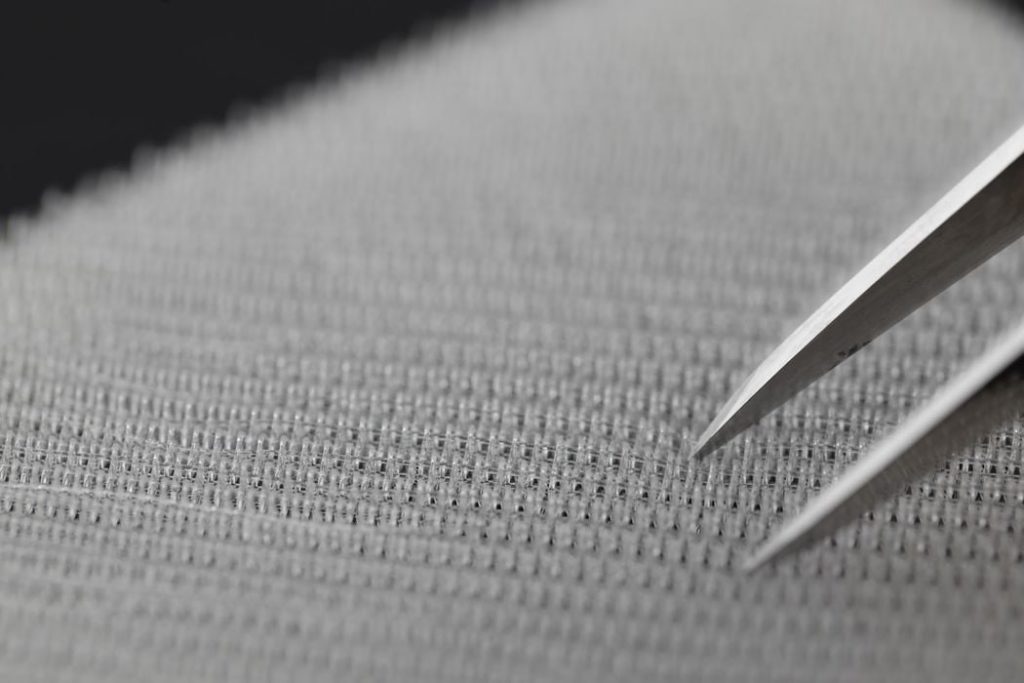
Meta-materials are objects having unusual properties due to their geometry. Often the structures generating the properties are quite small, so it appears to an observer that there’s a new material being created. In fact, it’s a “meta-material” that’s made from conventional materials but one that provides new functionality.
OPT Industries Origin
After founding OPT Industries only weeks after graduating, Ou rounded up some investment capital from two lead investors and hired a team of four engineers and designers. This group set out to develop an integrated hardware, software and materials system that could do things other 3D printers could not do. Today the company employs thirteen people.
While the company focuses strongly on software development, I feel their greatest achievement so far is the creation of a revolutionary 3D printer that does something no other resin 3D printer can do: print continuously.
Hold on, what does that mean?
All resin 3D printers today print within a defined build volume. That might be a build chamber (PolyJet) or a vat (SLA or MSLA). Either way you have a finite build volume and thus there is a maximum size of objects, and print jobs must occur serially: before the next job starts, the previous job must finish.
FFF 3D printers have overcome a similar constraint with the development of belt 3D printers. These devices print on a moving conveyor belt instead of a fixed plate, effectively making the FFF 3D printer able to print large objects of theoretically infinite length.
Now OPT Industries has done the same, except for a resin 3D printer.
They did not show me the internals of how this is accomplished, but here’s an animation of the RAMP printer in operation:
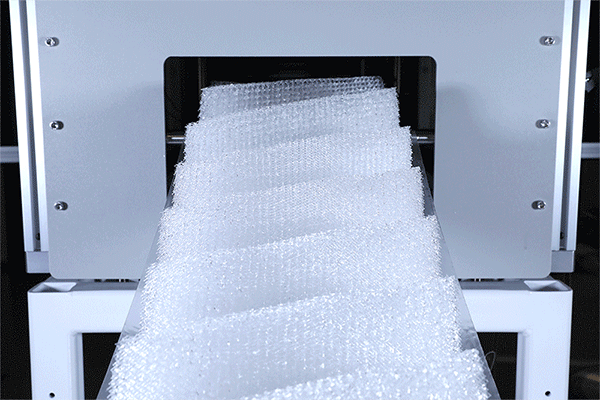
As you can see, objects simply flow out of the device. Whereas FFF belt 3D printers typically have a bucket to catch prints as they roll off the belt, OPT Industries does this:
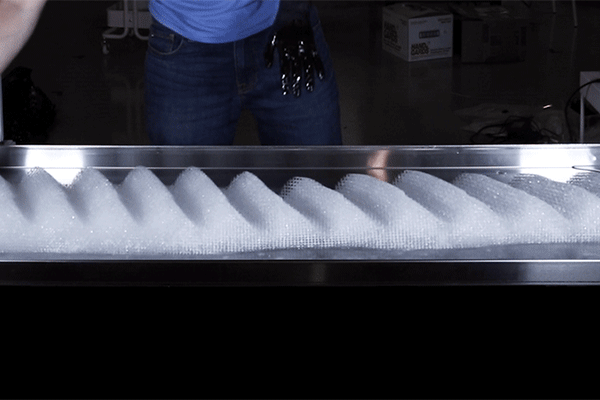
Clearly, the ”RAMP” OPT Industries 3D printer is designed for larger-scale production. They describe it as the:
“First-ever automated continuous manufacturing system powered by roll-to-roll based digital photolithography that allows for the creation of continuous materials and products at an unlimited length.”
OPT Industries InstaSwab
Even though OPT Industries is a startup company, they do have multiple paying customers at this early stage. Their flagship product at the moment is a highly sophisticated nasal test swab.
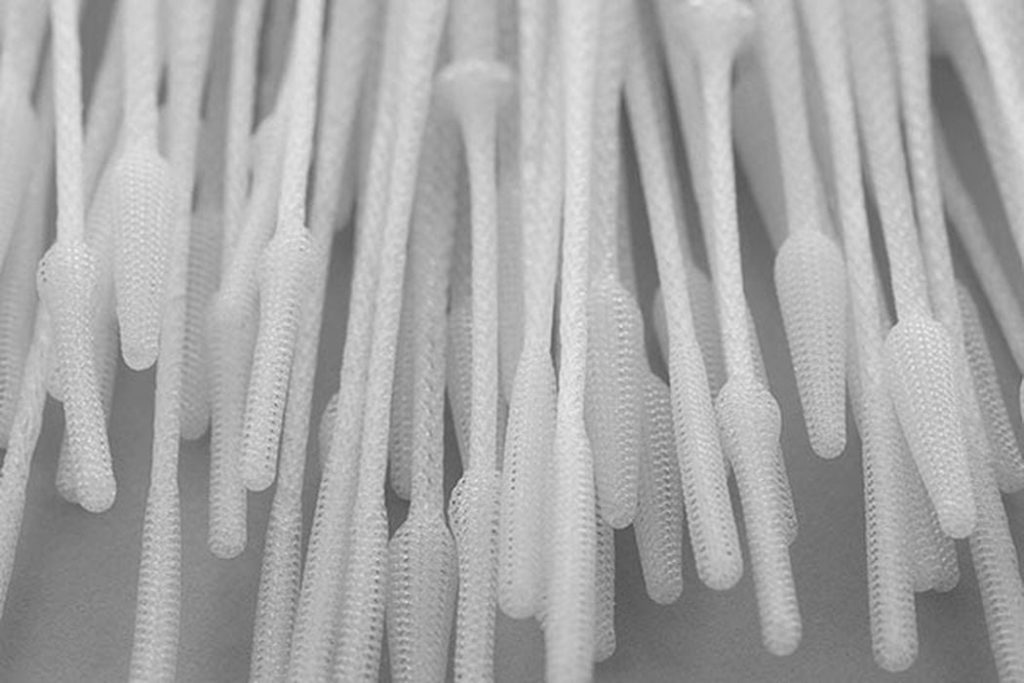
Now, I know what you are thinking: everyone and his dog 3D prints test swabs, so why is this any different?
This is why:
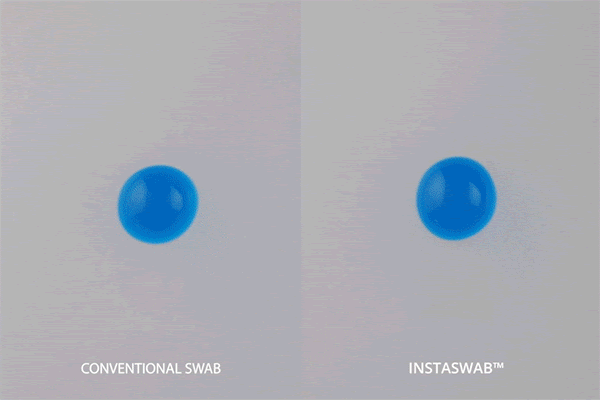
In the animation you can see how the OPT Industries test swab not only slurps up a sample with greater efficiency, it also releases the sample later with similar efficiency. OPT Industries told me their swab is about 20X more effective than typical test swabs.
How do they achieve this? The answer is that they’re using meta-material technology in the swab design, which involves dense microstructures specifically engineered for this purpose. That product shows the power of OPT Industries’ technology that combines hardware, software and materials.
Currently, the company is producing 80,000 test swabs per day using eight devices, so throughput is about 10,000 per day per machine. However, Ou explained that some clients require 1-2M swabs per month, so they are set for expansion.
OPT Industries Business Model
The swab project is indicative of OPT Industries’ business model, which is quite different from other 3D printer manufacturers.
While most 3D printer manufacturers produce machines and sell them to other manufacturers to produce parts, that’s not what OPT Industries will do. Instead, they take on projects to produce new and innovative products and use their technology internally to do so. In other words, you will not be able to buy a continuous resin 3D printer from OPT Industries.
After thinking about this very different strategy, it seems quite reasonable to me: by building the products themselves they are able to cut out multiple steps and players in the manufacturing process, and theoretically should be more profitable.
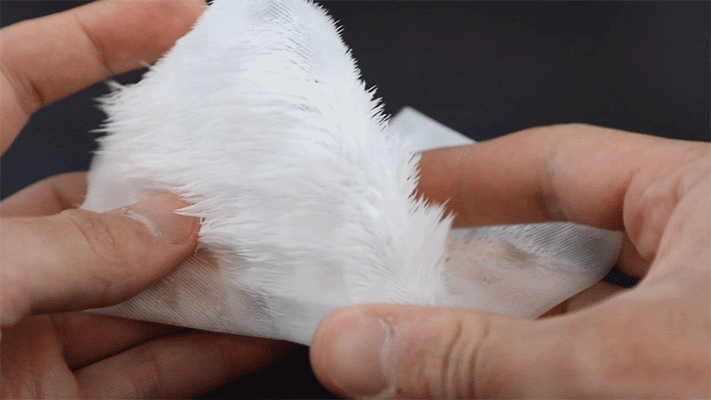
They would be able to keep the complex designs and resin formulations in-house, and become a kind of de facto standard for certain advanced products. Ou describes this as the “killer app” for product types.
It also allows OPT Industries to re-develop their technology for optimum fit for each incoming project. They can alter print parameters, materials and even the printers themselves to match the situation. Ou said the devices are inherently scalable due to their modular design, and can change both build volume and object resolution as required.
They don’t have to worry about the challenges of supporting devices in remote areas, and can rapidly upgrade their software to become more powerful without dealing with field software upgrades.
You might be wondering if test swabs is a good idea for a product, given that the pandemic is slowing down. Ou doesn’t believe so for several reasons.
First, the project allowed the company to produce real, end-use products at scale. This provided them an opportunity to learn a great deal about production and thus refine their own technology.
Secondly, the test swab as a design provides a platform that can be repurposed for other industries. One example cited by Ou is in cosmetics. Imagine a mascara applicator brush: this is an item that a) must pick up material, and b) release that material.
Sounds much like a test swab, doesn’t it?
It’s very likely there are a near infinite number of use cases for meta-material designs, so OPT Industries will no doubt be quite busy for many years.
To that end the company announced a new manufacturing site of 14,000sf (1300sm) that will be certified for production of medical devices.
OPT Industries certainly has a very different approach to making and using 3D printers, and I’ll be watching carefully to see how they evolve in the future.
Via OPT Industries
